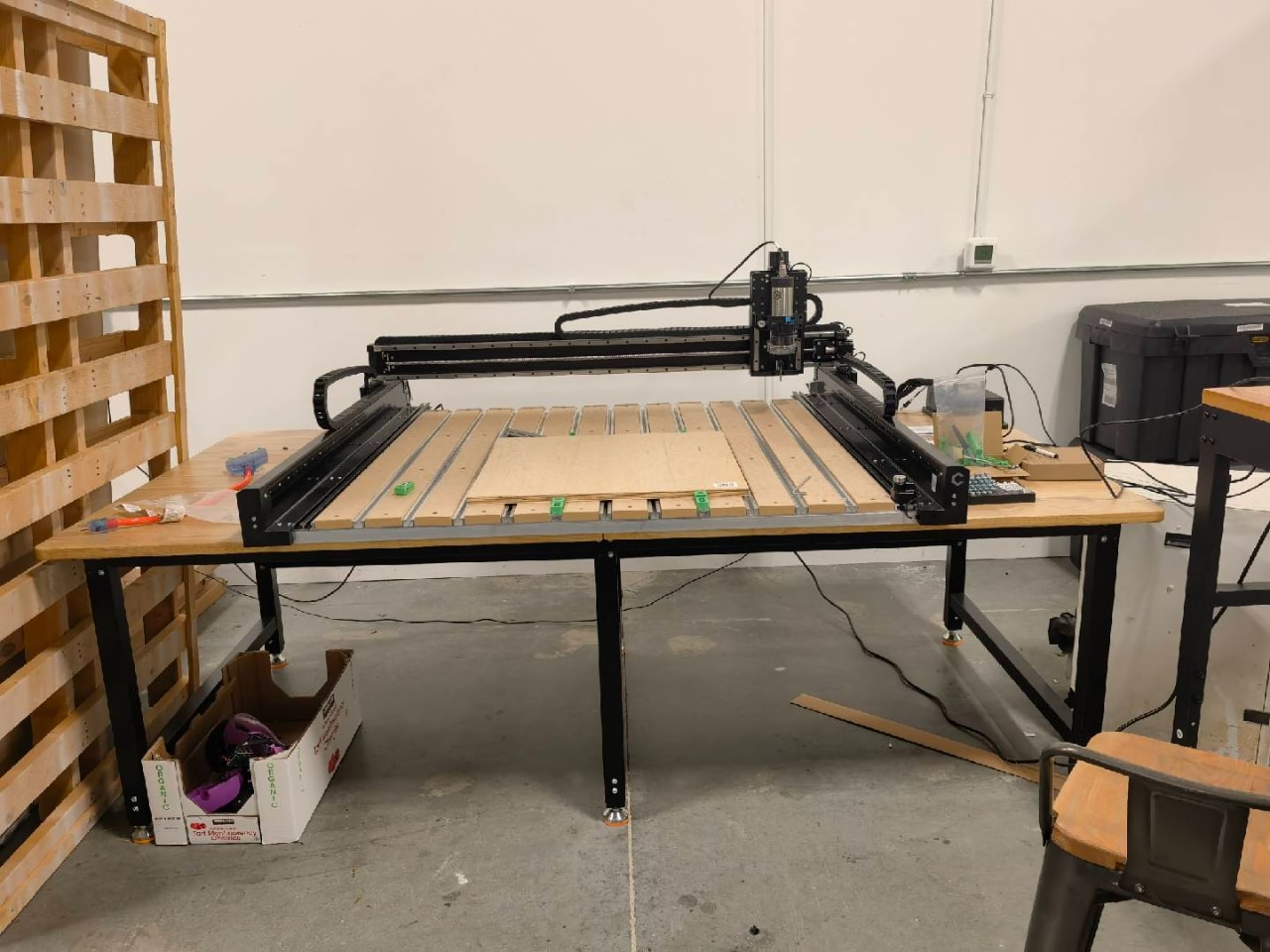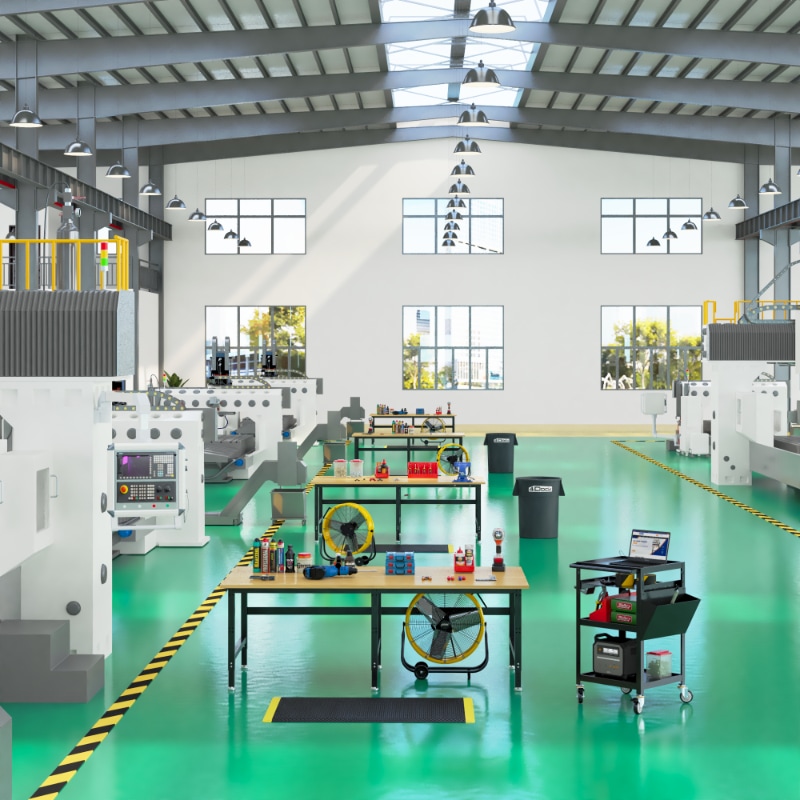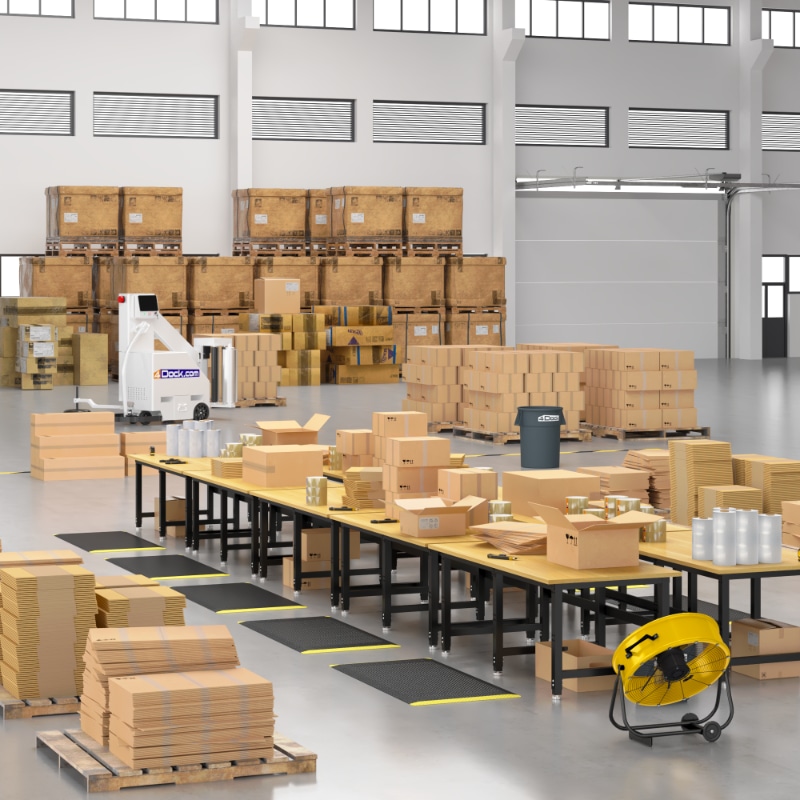Whether it's a CNC workshop, electronics assembly line, embroidery studio, or engineering school lab bench, every workspace needs a workbench that combines performance and efficiency. This article focuses on workplace scenarios, combining specific environments with size recommendations to help you find the perfect workbench.

Why Size Matters
- Work Efficiency: Improper sizing leads to cramped or wasted space, disrupting workflow.
- Physical Health: Insufficient depth strains eyesight; incorrect height causes neck and shoulder discomfort.
- High Load Capacity: Industrial equipment and heavy materials demand robust stability and weight-bearing.
- Multifunctionality: Tasks like sanding, assembly, electrical testing, or embroidery layout often occur on a single surface.
- Teamwork & Training: Proper sizing optimizes layout and communication for collaborative work.
Core Dimension Analysis by Workspace
Primary Use & Equipment Type:
- CNC / Electronics Assembly / Engineering Schools: Requires space for equipment (oscilloscopes, CNC controllers) and components. Recommend 72×36″ or larger for adequate work and storage.

- Embroidery Studio / Sewing Workshop: Fabric spreading and multi-spool setups need width ≥72″, depth ≥36″ to avoid restrictions.

- Warehouse / Assembly Line: Modular configurations (e.g., two 60×30″ or 72×30″ tables joined) offer flexible rearrangement.

Space & Layout Planning:
- Allow 31–47 inches for walkways and equipment access.
- Wall-side work areas: Depth 24–30″.
- Center-aisle areas: Can utilize deeper tables.
- Plan for integrated power strips or cable management near outlets.
Load Capacity & Material Choice:
- Heavy tools/materials: Choose ≥1000 lb capacity steel frames with wood/composite tops.
- ESD-sensitive (e.g., electronics assembly): Select ESD-safe surfaces / anti-slip materials.
- Chemical exposure: Choose chemical-resistant surfaces.
Ergonomic Height:
- Typical lab/assembly height: 34–36″ for sit-stand flexibility.
- Electric height-adjustable desks are ideal for schools/shared spaces.
Size Recommendations Table
| Use Case | Recommended Size (W × D in inches) | Load Capacity | Structure / Additional Features |
| CNC Assembly / Lab Bench | 72 × 36 or 94 × 48 | ≥ 1000 lb | Steel frame + anti-slip/chemical-resistant surface, built-in power |
| Electronics Assembly / Engineering Lab | 60 × 30 to 72 × 36 | 500–1000 lb | ESD-safe top + cable trough + task lights + pegboard |
| Embroidery Studio / Fabric Work | 72 × 36 | 500–800 lb | Stain-resistant surface + drawers/rails for thread spools/fabric |
| Production Line / Warehouse Assembly | Modular 60×30 or 72×30 | 500–1000 lb | Connectable configurations, optional integrated storage units |
Case Studies
- 94′ Industrial Workbench: 94×48″ (239×122 cm), adjustable height 27.5–40.8″ (70–104 cm), 3000 lb (1360 kg) capacity. Ideal for heavy CNC machining.

- 72′ Custom Workbench: 72×48″ (183×122 cm), adjustable height 27.5–40.8″ (70–104 cm), 3000 lb (1360 kg) capacity. Ideal for embroidery/textile work.

- Modular Workbench Systems: Add tool holders, accessory bins, monitor arms, etc., to adapt to workflows.

How Customers Can Choose & Order
- Define Use Case & Process: Equipment types, weights, multi-user needs.
- Measure Layout & Access: Ensure adequate walkways and avoid conflicts.
- Determine Required Size & Structure: Select appropriate dimensions and load capacity.
- Choose Surface Material & Features: ESD protection, chemical resistance, anti-slip, power integration, tool holders, lighting.
Professional Workstations Drive Your Workspace:
The right workbench is foundational for productivity, safety, and efficiency in demanding environments like CNC shops, electronics assembly, embroidery studios, and engineering schools. Selecting the optimal size and structure enables safety, collaboration, and sustained value.

